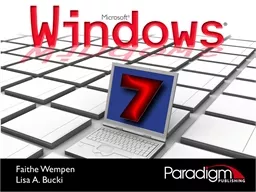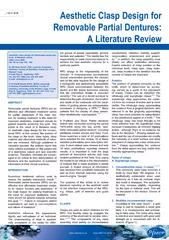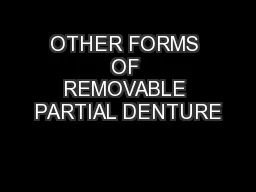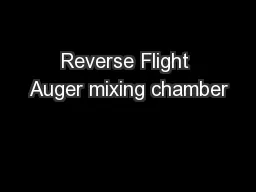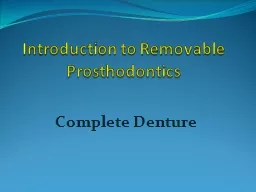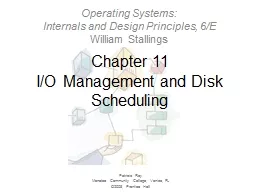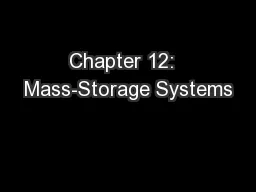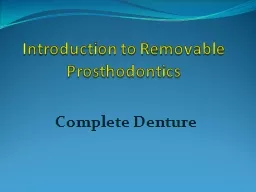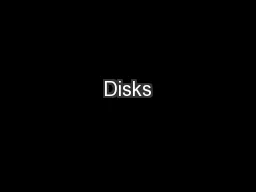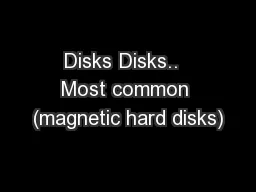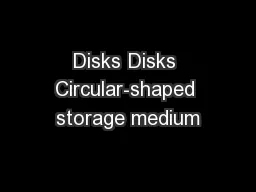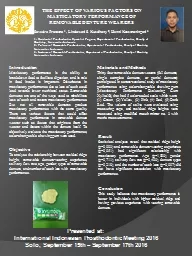PPT-Chapter 2 Working with Disks and Other Removable Media
Author : pamella-moone | Published Date : 2018-11-09
2 Understanding and Selecting Storage Save files to a variety of media types including Floppy disks Flash random access memory RAM devices CDs and DVDs Hard disks
Presentation Embed Code
Download Presentation
Download Presentation The PPT/PDF document "Chapter 2 Working with Disks and Other R..." is the property of its rightful owner. Permission is granted to download and print the materials on this website for personal, non-commercial use only, and to display it on your personal computer provided you do not modify the materials and that you retain all copyright notices contained in the materials. By downloading content from our website, you accept the terms of this agreement.
Chapter 2 Working with Disks and Other Removable Media: Transcript
Download Rules Of Document
"Chapter 2 Working with Disks and Other Removable Media"The content belongs to its owner. You may download and print it for personal use, without modification, and keep all copyright notices. By downloading, you agree to these terms.
Related Documents

